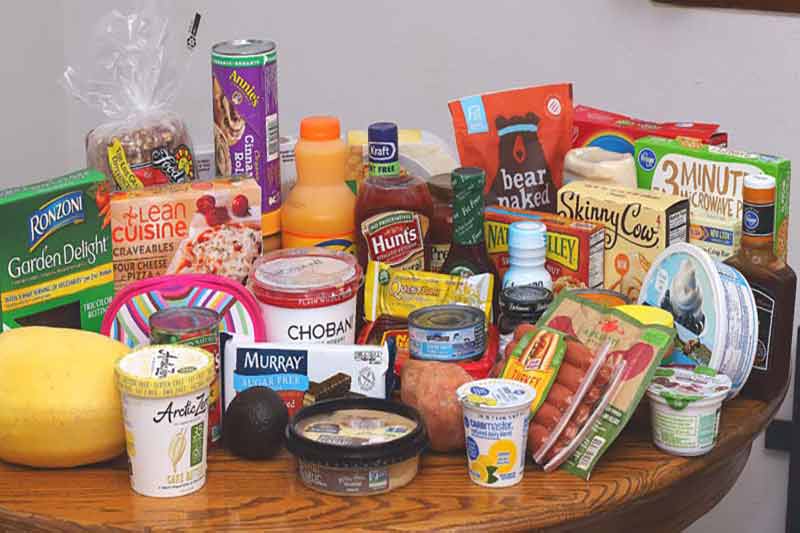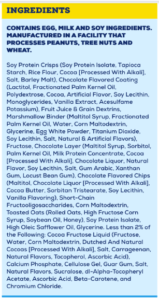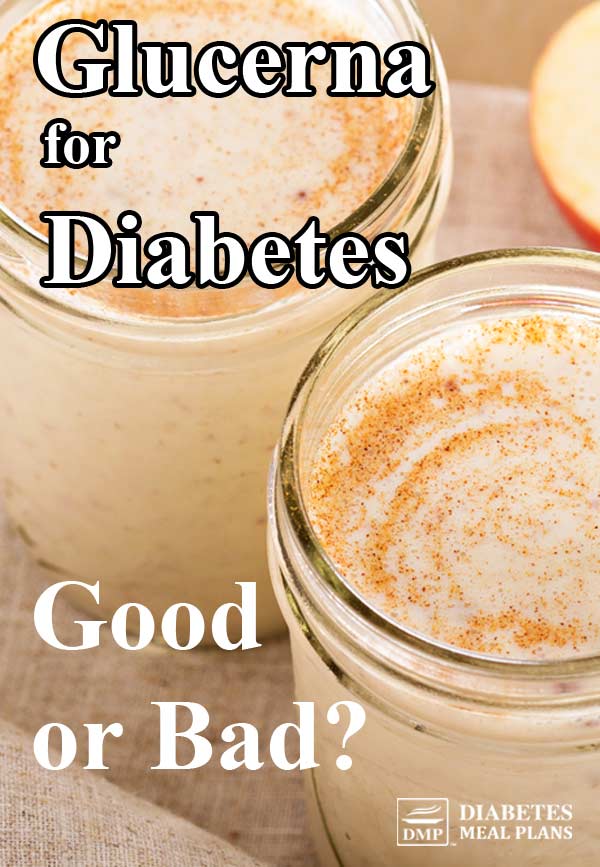You can barely walk through a grocery store without seeing dozen of products aimed specifically at type 2 diabetics. Power bars, protein drinks, weight loss aids, and meal replacement shakes line the walls of the pharmacies and supermarkets.
Many of these products are advertised as “diabetes friendly,” but are they actually a healthy option for people with diabetes? How can you tell which products are worth their salt and which ones aren’t all they’re cracked up to be?
A good place to start is by recognizing that the companies behind these “diabetes friendly” food products have one goal: to sell their product!
That doesn’t mean that these brands are outright lying to you or purposely trying to rip you off, but they may be preying on your naivety and hoping that you’ll buy their products without giving it a second thought.
As an informed consumer, it’s your job to think critically about what is best for your body and your health condition before blindly buying into the hype.
Glucerna is great example of a product line that is directly marketed to diabetics. This brand carries meal replacement protein shakes as well as protein bars that are advertised as “ideal for diabetics.”
Sure, these products may provide a quick and convenient meal, but are they actually as effective as the company claims?
Let’s take a closer look at what’s in these so-called “health foods”…

Nutrition Facts for Glucerna Products
Here is a quick rundown of the basic nutrition facts for the Glucerna vanilla flavored meal replacement shake:
- Calories: 190
- Carbohydrates: 16g
- Protein: 10g
- Fiber: 3g
Right off the bat you can see that it contains 10g of protein, which is pretty good, but does that protein fully negate the 16g of carbs? The answer is no, it doesn’t, and the measly 3g of dietary fiber doesn’t help much either.
Those 16g of carbs are not “diabetes friendly” no matter how you package them (and if that wasn’t bad enough, the original shake formula contained 32g of carbs!)
Unfortunately, the protein snack bar isn’t any better in terms of nutrition. Here’s the breakdown:
- Calories: 150
- Carbohydrates: 20g
- Protein: 10g
- Fiber: 3g
Are you noticing a theme here?

The theme is too many carbohydrates! Eating a high protein meal is great, but it would be a whole lot better without all those pesky carbs.
Both the meal replacement shake and the protein bar also contain a decent amount of vitamins and minerals, but the excitement begins to fade once you realize that these micronutrients are “added” to the food, instead of naturally occurring in it.
Removing micronutrients from their natural sources and simply dumping them into another food doesn’t give you the same synergistic effect as consuming the vitamins and minerals in whole foods.
In general, the further you stray from whole foods, the further you stray from real nutrition.
Your body likes ingredients that it easily recognizes, which are mostly going to be whole foods like vegetables, fruits, and clean meats sources.
Speaking of whole foods (or lack thereof), take a look at the ingredients list for the Glucerna protein snack bar. Do you recognize any of these ingredients? Probably not too many of them!
It’s wise to always approach foods that have very long ingredients lists with caution.
Some of these unsavory ingredients include fructose (a hormone disruptor), sucralose (an artificial sweetener with a reputation for increasing blood sugar), and corn maltodextrin (a known metabolism killer).
Health Claims Made by Glucerna
Now, let’s examine the major health claim made by Glucerna and see if it holds any weight.
Glucerna boast that its “carbsteady” formula of slow-release carbohydrates will minimize peaks in blood sugar after eating.
Just a few minutes of digging through the Glucerna website reveals that this claim is pretty weak.
It turns out that these “low-release carbs” are only better when compared to “high-glycemic carbohydrate” alternatives.
Their “research” compares the blood sugar stabilizing effects of the Glucerna shake verses a bowl of instant oatmeal.
Obviously, a bowl of instant oatmeal is a high glycemic food that is very high in quick carbs, so by comparison, the Glucerna meal replacement shake is the “healthier” option.
But what would happen if you compared the effects of the Glucerna products to an actual low carb meal? You can bet that Glucerna would lose, fair and square.
Choosing a sugary shake over a bowl of instant oatmeal is like choosing to walk across a bed of hot coals in a pair of socks rather than walking across it barefoot. Why not choose to skip the hot coals altogether and just enjoy a low carb, whole food meal instead?

Research on Glucerna and Diabetes
Real research doesn’t paint Glucerna products in a favorable light either.
A 2014 study tested type the supposed blood sugar stabilizing effects of Glucerna. Twenty type 2 diabetics were given either a Glucerna shake or a “free choice” breakfast (as a control) daily for 3 months.
At the end of 3 months, testing revealed that Glucerna elicited a slightly reduced glucose AUC level when compared to the “free choice” breakfast group, but the fasting plasma glucose and A1C levels among the Glucerna group were not affected. Those in the Glucerna group even experienced a reduced oral glucose tolerance by the end of the study (uh oh!).
Another study that compared 3 different meal replacement shakes found that, while Glucerna was the best of the 3 shakes tested, the 2-hour postprandial blood glucose values of those consuming Glucerna still exceeded the ADA’s recommended upper limit.
So, while Glucerna wasn’t the worst of the shake options, it certainly doesn’t stabilize blood sugar as well as it claims to.
Finally, a third study found that Glucerna was less effective at lowering postprandial glucose after 120 mins when compared to another meal replacement shake (called Enterex Diabetic). This doesn’t make Enterex Diabetic a great choice either, however, because those who drank the Enterex shake experienced more blood sugar swings from the 0 to 120 min mark.
That study also revealed that Glucerna created an increase in triglyceride concentrations (fats in the blood) at the 120 min mark post-meal. High triglyceride levels are associated with a greater risk for heart disease and cardiovascular events among type 2 diabetics.
Glucerna: Blood sugar miracle or too good to be true?
It looks like Glucerna products don’t make the cut, and the health claims made by the company are a little too good to be true.
In the end, these products were loaded with artificial ingredients and contained too many carbs.
Research has proven that following a low carb diet is the best way to manage your type 2 diabetes naturally, so it’s best to steer clear of foods with higher carb contents even if they claim to be “designed for diabetics.”
Next time you’re tempted to grab a self-proclaimed “diabetes friendly” snack bar or protein shake, ignore the claims made of the front of the package—these are intended to catch your eye and get you to buy no matter what.
Take a moment to check out the nutrition label and ingredients list on the back of the package. If you see lots of carbs and a host of strange ingredients that you don’t’ recognize, you’ll want to put that shake back on the shelf where it belongs.
The recipe for better health is a lot simpler than some food companies want you to think it is. Just reach for whole foods, limit your daily carbs, and kick fake ingredients to the curb.

Leave a Reply